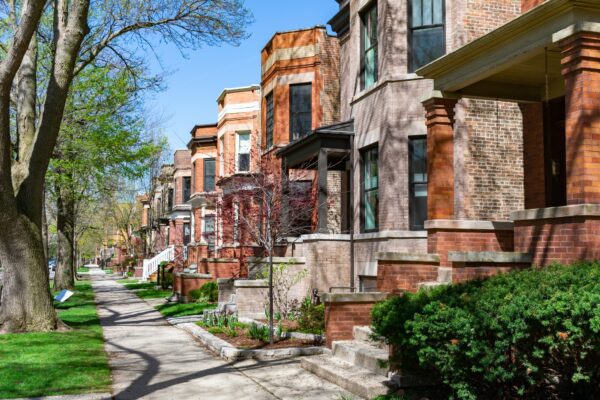The housing voucher program is a vital federal initiative that helps low-income families access safe, affordable housing in the private rental market. Known as the Housing Choice Voucher or Section 8 program, it enables property owners, public housing agencies (PHAs), and landlords to support housing affordability while maintaining compliance with HUD regulations, including the latest NSPIRE inspection standards. This guide breaks down how the housing voucher program works, who qualifies, and what housing professionals need to know to stay compliant and efficient.
What Is the Housing Voucher Program?
The housing voucher program is funded by the U.S. Department of Housing and Urban Development (HUD) and managed locally by PHAs. It empowers eligible families to choose their rental units in the private market, rather than being limited to public housing. Participants receive monthly rent subsidies, which are paid directly to property owners or landlords, reducing the tenant’s out-of-pocket housing costs.
Typically, tenants pay roughly 30% of their adjusted gross income toward rent, with the PHA covering the remaining portion. The subsidy amount is determined using HUD’s established fair market rents (FMRs) and local payment standards. Property managers in cities like Atlanta, Chicago, and Philadelphia are especially familiar with the program due to the significant demand for affordable housing in urban areas.
For landlords and multifamily property owners, the benefits include reliable rent payments, reduced turnover, and the ability to serve a broader tenant base—all while fulfilling a crucial community need.
Housing Voucher Program Eligibility Criteria
To qualify for the housing voucher program, applicants must meet key HUD criteria based on income level, household size, citizenship status, and housing need. Each year, HUD sets income limits tied to the area median income (AMI) for every region. Generally, an applicant household must earn less than 50% of the AMI, but PHAs prioritize those earning 30% or below.
Additional eligibility requirements include:
- U.S. citizenship or eligible immigration status
- No history of serious criminal activity or recent evictions
- Verification of income and assets through documentation
Applicants must apply through their local PHA, where long waitlists are common. Priority may be given to families experiencing homelessness, victims of domestic violence, or individuals with disabilities or elderly members. For rental property managers, confirming voucher validity and coordinating with the PHA at lease-up is essential for ensuring compliance from day one.
How Landlords Can Participate in the Housing Voucher Program
To rent to voucher holders, landlords must comply with HUD’s housing inspection criteria—either the older Housing Quality Standards (HQS) or the newer NSPIRE standards. Before occupancy, each unit must pass an initial inspection conducted by the PHA or a HUD-certified agent. Ongoing inspections, including annual and special reviews, may follow to ensure continuous compliance.
Steps landlords need to follow include:
- Scheduling an initial NSPIRE or HQS property inspection
- Signing a Housing Assistance Payment (HAP) contract with the local PHA
- Creating a compliant lease agreement for the voucher tenant
- Maintaining property standards throughout the lease term
Participation offers significant advantages such as consistent rental income, lower vacancy risk, and long-term tenancy prospects. However, understanding HUD compliance procedures, especially under NSPIRE, is essential for a smooth experience.
NSPIRE: New Standards for Voucher Housing Inspections
The housing voucher program now operates under the NSPIRE (National Standards for the Physical Inspection of Real Estate) model, which replaces the legacy HQS inspections. NSPIRE emphasizes resident health and safety with tiered deficiency categories and redefined inspection scoring.
NSPIRE classifies issues as:
- Life-Threatening (LT): Missing smoke alarms, exposed wiring, blocked exits
- Severe (S): Broken glass, collapsing ceilings, failing ventilation
- Moderate (M): Chipped paint, worn flooring, leaky faucets
For instance, a recent NSPIRE inspection in Minneapolis found missing bedroom smoke detectors and exhaust fan malfunctions. These violations resulted in a failed score, delaying the lease start for a voucher-holding family. Under NSPIRE, LT deficiencies must be corrected within 24 hours; other infractions typically within 30 days. Repeat deficiencies can lead to payment withholds or voucher ineligibility, highlighting the importance of inspection preparedness.
Best Practices for NSPIRE Inspection Readiness
Maintaining inspection compliance starts with proactive property management. Owners and managers who want to succeed under the housing voucher program should integrate NSPIRE readiness into daily operations. Key actions include:
- Conducting pre-inspections before the PHA arrives
- Testing smoke and carbon monoxide alarms regularly
- Keeping detailed records of maintenance and repairs
- Training staff using NSPIRE guidelines and definitions
- Responding quickly to tenant complaints or maintenance reports
It’s also helpful to coordinate early with your PHA when leasing to voucher tenants to avoid delays. Some professionals choose to collaborate with independent inspection consultants, such as The Inspection Group, to conduct mock inspections and design a customized compliance roadmap.
Maximizing Compliance and Efficiency in the Housing Voucher Program
Success in the housing voucher program depends on balancing regulatory compliance with streamlined operations. By learning the NSPIRE standards, understanding eligibility rules, and prioritizing proactive maintenance, property owners create a strong foundation for long-term rental success.
Educating staff, preparing units for inspections, and maintaining consistent documentation not only improve inspection performance—they also enhance tenant satisfaction and reduce disruptions in housing assistance payments. Ultimately, compliance drives both financial stability and community impact.
Expert NSPIRE and Section 8 Support from The Inspection Group
If you’re managing a property participating in the housing voucher program, expert support can improve your inspection outcomes and reduce compliance risks. The Inspection Group specializes in helping landlords and housing operators prepare for NSPIRE inspections, understand Section 8 guidelines, and strengthen affordable housing operations nationwide.
Contact The Inspection Group today for tailored training, pre-inspection walkthroughs, and program compliance consulting designed for your property and market. Let us help you stay inspection-ready, resident-focused, and fully compliant.





